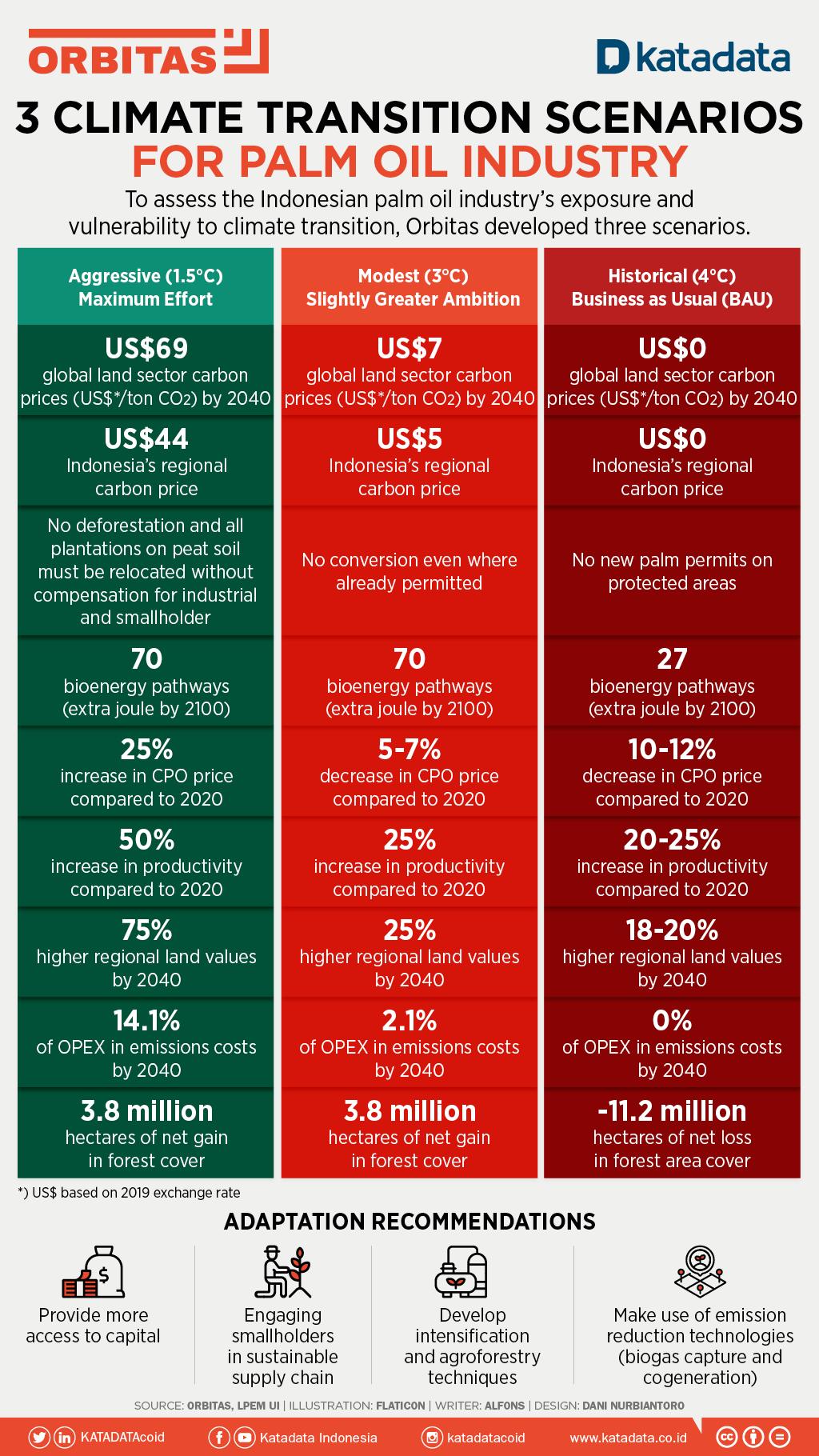THANK YOU FOR DOWNLOADING
Learn More
If you would like to hear more from Orbitas, including updates on our analysis and resources, please subscribe here.
Author: Kyle Saukas
Orbitas has modeled 3 climate transition scenarios based on the magnitude of increase in temperature due to climate change and climate transition impacts by 2100

Orbitas established three climate transition scenarios in our Indonesian palm oil analysis to measure the impact of global warming on the industry. The first scenario, which is called historical, assumes conditions without intervention or business as usual (BAU) with a target temperature increase of up to 4°C. While the second scenario is called moderate, it is a bit more ambitious with the temperature rise limit expected to be around 3°C. Finally, the aggressive scenario, the maximum-effort scenario that seeks to achieve global ambitions to prevent a temperature increase of no more than 1.5°C. The three scenarios are differentiated based on carbon prices and regulations related to land conversion. After that, the impact is seen on the increase in commodity prices, increased productivity, use of bioenergy, increases in land prices, operational costs, and changes in land cover.
Of the three scenarios, Orbitas provides several recommendations for producers and financiers to see the best outcomes. First, smallholders need to be embraced in a sustainable supply chain. Second, it is necessary to develop intensification and agroforestry methods. Third, it is necessary to use technology to reduce emissions. And finally, access to capital needs to be expanded so that industry players can adapt to this climate transition.
DOWNLOAD INFOGRAPHIC